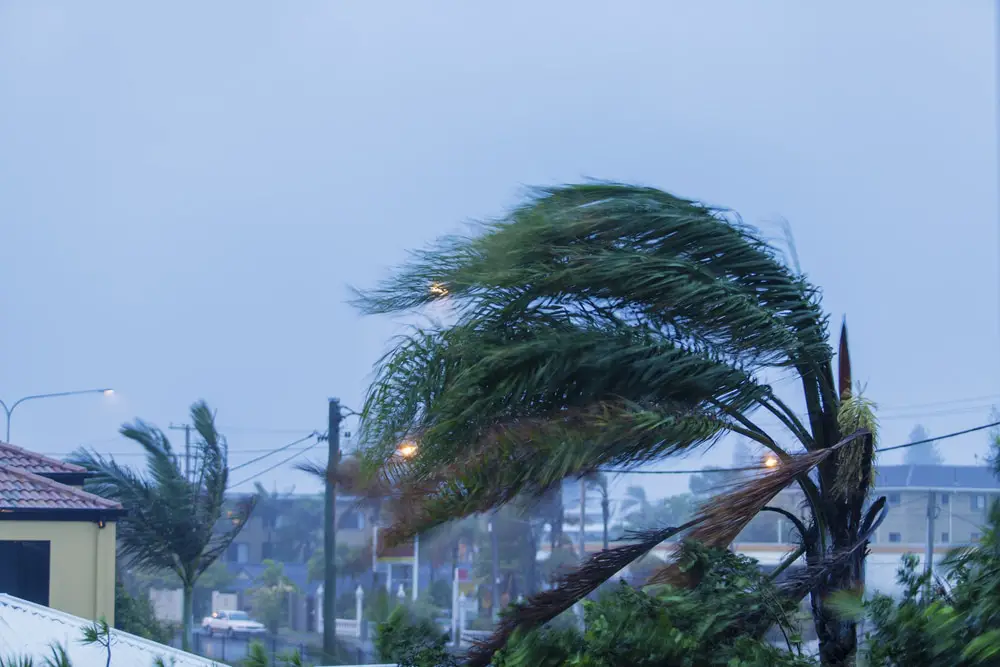The weather plays a very important part on a hike. Depending upon the season that you choose to hike in, the weather conditions will naturally change but wind is a factor that should also be accounted for. Wind that blows at a rate of 50 miles per hour is estimated to be highly dangerous for a hike and keeping in mind safety concerns, hiking in wind speeds that are less than 30 miles per hour is the safest. We take a closer look at how wind can have a big impact on the success of a hike.
Table of Contents
How Windy Is Too Windy For a Hike?
The safest winds to hike in is when its speed is at 20 miles per hour. Anything above a speed of 30 miles per hour is considered a risk and above 50 miles per hour, can even be fatal for a hiker.
You May also Like: Tentrr Review – Is it Legit?
How is Wind Speed Measured?
Learning what wind speed is optimal for a good hike is very important for a hiker as that helps one prepare in advance for any climate changes that could occur. To do that, it’s recommended to use the Beaufort Wind Scale. The Storm Prediction Center has put together a great table that we’ve summarized for hiking below.
The first 5 speeds are great for hiking especially if you are a beginner.
| Force | Wind Speed (MPH) | Wind Description | Wind Effects on Land |
|---|---|---|---|
| 1 | 1 -3 | Light Air | A very mild breeze can be felt. |
| 2 | 4-7 | Light Breeze | The breeze is slightly stronger and can be felt on the face and body. |
| 3 | 8-12 | Gentle Breeze | Leaves sway gently in this type of breeze and the heat (if any) is more bearable. |
| 4 | 13-18 | Moderate Breeze | Loose objects like paper fly in this moderate breeze and so does dust. |
| 5 | 19-24 | Fresh Breeze | Leaves sway a bit more strongly in this type of breeze and small ripples can be seen in still water bodies. |
The Resistance you feel against you will start to slow you down from your normal walking pace at these levels:
| Force | Wind Speed (MPH) | Wind Description | Wind Effects on Land |
|---|---|---|---|
| 6 | 25-31 | Strong Breeze | It is difficult to open an umbrella when a strong breeze is blowing and larger branches can be seen swaying too. |
| 7 | 32-38 | Moderate Gale | In a gale, it becomes difficult to walk against the wind and balance is also affected. Whole trees can be seen in motion and in cold weather, there is a high risk of getting frostbite. |
Your hike should be avoided or postponed if the weather shows the below wind speeds.
| Force | Wind Speed (MPH) | Wind Description | Wind Effects on Land |
|---|---|---|---|
| 8 | 39-46 | Fresh Gale | Walking becomes more difficult and smaller twigs may break off easily from the trees. Maintaining a steady balance becomes tough. |
| 9 | 47-54 | Strong Gale | Walking becomes even tougher and damage to structures is high. A hiker will find that his speed has decreased and he may even walk sideways to maintain balance. |
| 10 | 55-63 | Whole Gale | In winds like these, more damage tends to happen to standing structures and whole trees may also be uprooted. There is a strong chance for a hiker to be blown off his feet. |
| 11 | 64-73 | Storm | Large widespread damage tends to occur when these winds are blowing. |
| 12 | 74+ | Tornado or Hurricane | Wind speeds like these cause destruction on a large scale. |
Why Is Windy Weather Dangerous?

Even the most seasoned hikers know better than to go hiking when there’s a strong wind. Here’s why:
- Strong winds will slow down your pace and that means it will take you longer than planned to cover a certain distance.
- Dangerous winds can cause a hiker serious injuries and a hiker may even fall off a mountain if the wind speed is that high.
- Walking against the wind can reduce your energy levels and make you tire easily.
- The more the wind speed, the more frequently you will be adjusting your balance and you will also have your foot placement to worry about.
- Wind speed and direction is highly unpredictable. As one goes higher, the wind speed also increases naturally. Places that have high ridges are more dangerous in bad weather. Valleys and mountains usually have winds that change direction quickly making a hike fatal.
- Strong winds can also make you feel extreme cold in your hands, feet and head, which could make movement difficult.
- When feet and hands are exposed to such bitter weather conditions for hours at a stretch, there is a real danger of hypothermia or frost nip.
Hiking Gear to Bring for Windy Weather
- Layering is the best way to stay warm if you plan on hiking in windy weather. The right way to wear your hiking clothes would be to:
- Wear long sleeved thermal inner wear or a fleece sweater.
- Wear a thicker jacket or sweater as the next layer.
- Then wear a windbreaker or a thick waterproof jacket that will keep you dry in case there’s sudden rain.
- A beanie to keep your head warm and thick gloves will keep you warm.
- Don’t forget a pair of thick synthetic or wool socks and carry an extra pair in your backpack too.
- Protecting your eyes from the hot sun and wind is important so wear goggles or sunglasses.
- Sunscreen is almost always forgotten but it is important to remember that just because it may not always be sunny during the day, it does not mean that the UV rays will not damage your skin. The skin on the forehead, under the eyes, nose, cheeks and neck area are the most exposed so dab waterproof sunscreen properly on them.
- Carry extra dry food and water supplies just in case you need them.
- Don’t forget your emergency hiking kit as hikes in cold weather tend to become unpredictable quite quickly.
Tips for Staying Safe on a Windy Hike
Carry A Map
Let’s assume that you do decide to go hiking in windy weather. It is best to be prepared in that case and one of the smartest things you can do is to carry a physical map with you just in case you enter a spot where there is no mobile coverage. By tracing your route on the map, you’ll have a better idea about how to get back safely either way.
Carry a Compass
Yes, phones do have an inbuilt compass in them but why rely on a gadget that you may not be able to use in real-time if you run into bad weather. Carrying an actual compass with you will help you gauge where you are and you will be able to protect yourself better.
Buy A Wind Meter
If you know that you can expect windy weather, it makes sense to invest in one of these. You will be able to read both the wind speed and temperature for your location. You’ll have a fair warning ahead of time in case the weather is expected to become worse.
Buy A Headlamp
If you want to go hiking in winter, then you’ll have fewer hours of daylight. By buying a headlamp, you will be prepared to hike in the dark, if need be.
Use Hiking Poles
Hiking poles are highly under-rated but are your best friends when on a hike. They greatly help in ensuring that you are able to maintain your balance while walking and provide support on inclines and steep edges. With so many great foldable options available, they add hardly any weight to your backpack.
Check The Weather Beforehand
The most important weather parameters to check for include wind speed, precipitation, maximum and minimum temperature. It makes sense to be prepared by carrying along extra clothes and supplies if the weather is expected to take a turn for the worse.
Wind can be a real killer and even the best hiker knows better than to step out in unpredictable weather. Do remember that even if you were looking forward to a hike, hiking in windy weather is always best avoided.

